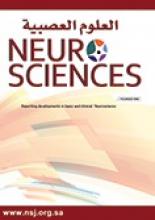Abstract
Objective: To identify the level of depression, the level of life quality, and the relationship between these, in patients applying to sleep centers for various sleep problems.
Methods: This cross-sectional study included 229 patients who applied for polysomnography at sleeping centers under supervision of the Neurology and Chest Diseases Clinics of Kayseri Education and Research Hospital, Kayseri, Turkey between June and August 2013. The data collection tools were a socio-demographical data form, Beck Depression Inventory (BDI), Pittsburgh Sleep Quality Index (PSQI), and the World Health Organization Quality of Life Scale (WHOQOL-BREF). For statistical analyses, the Student t-test, Kruskal-Wallis-variant analysis, and chi-square tests were used. Significance level was considered as p<0.05.
Results: In our study, patients who were older aged, married, not working, and who had a chronic disease, and a severe depressive symptom were observed to have significantly poorer sleep quality. While patients with any chronic disease had significantly higher scores for total PSQI and depression, their physical, mental, and social WHOQOL-BREF scores were significantly lower. The PSQI total scores, and depression scores of the smoking patients were significantly higher for physical, mental, and social WHOQOL-BREF fields. There was a positive correlation between PSQI scores and BDI scores while there was a negative correlation among BDI, PSQI, and WHOQOL-BREF life quality sub-scale scores.
Conclusions: Sleep quality was significantly poorer in patients who were older aged, married, not working, and who had a chronic disease, and a severe depressive symptom. There was a significantly negative correlation among depression, sleep quality, and life quality, while there was a significantly positive correlation between life quality and depression.
- Received March 2, 2015.
- Accepted May 18, 2015.
- Copyright: © Neurosciences
Neurosciences is an Open Access journal and articles published are distributed under the terms of the Creative Commons Attribution-NonCommercial License (CC BY-NC). Readers may copy, distribute, and display the work for non-commercial purposes with the proper citation of the original work.






